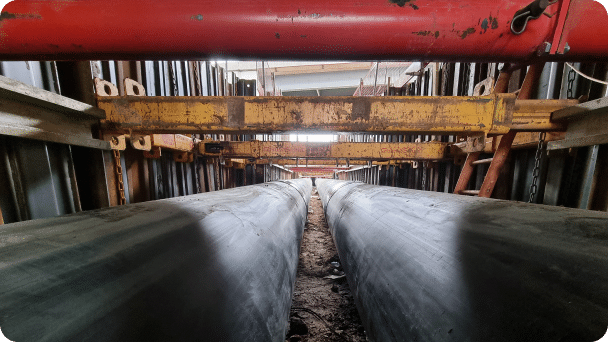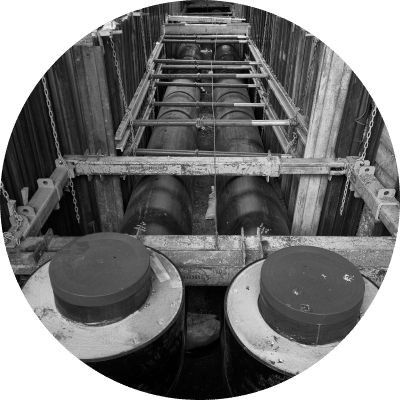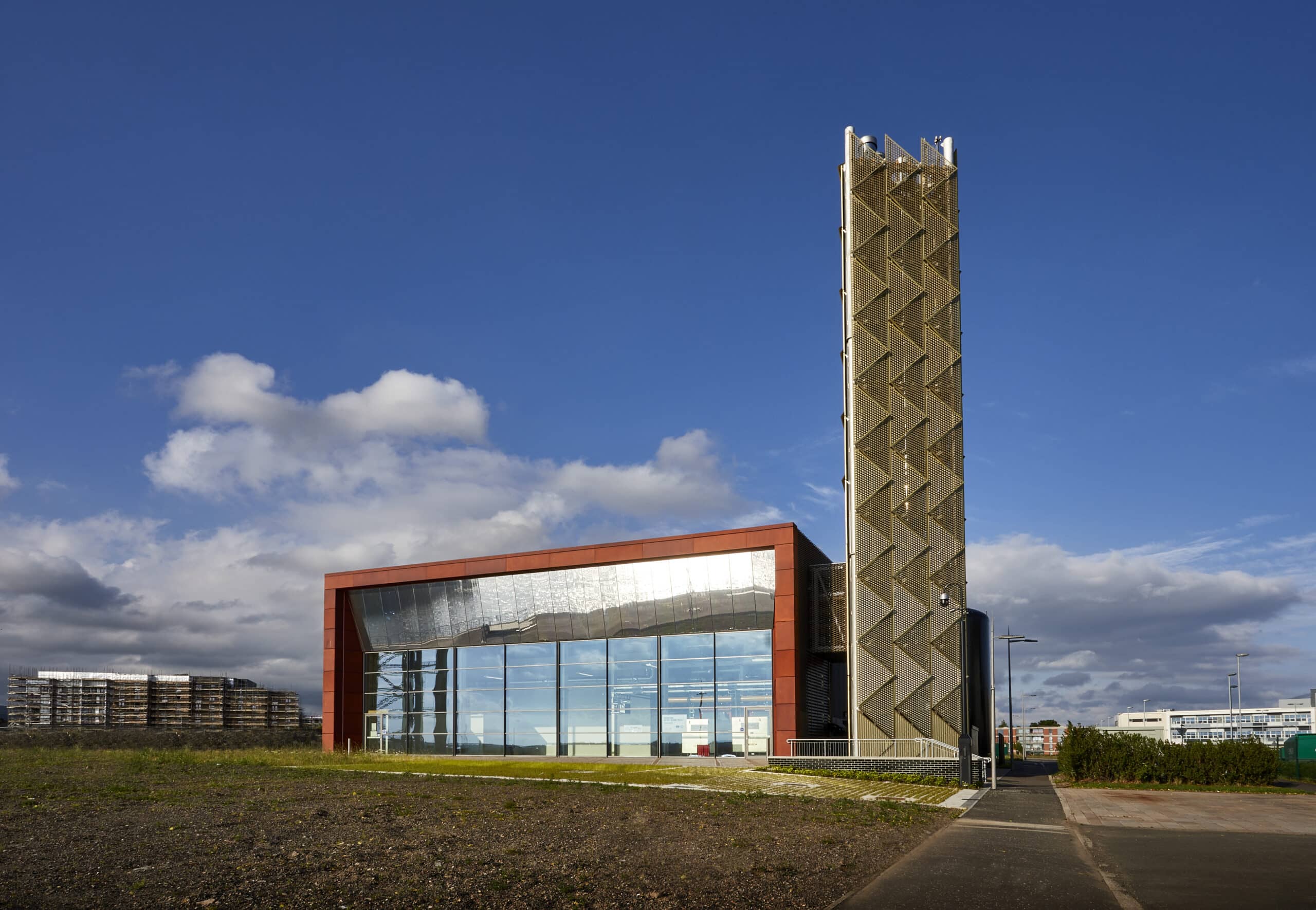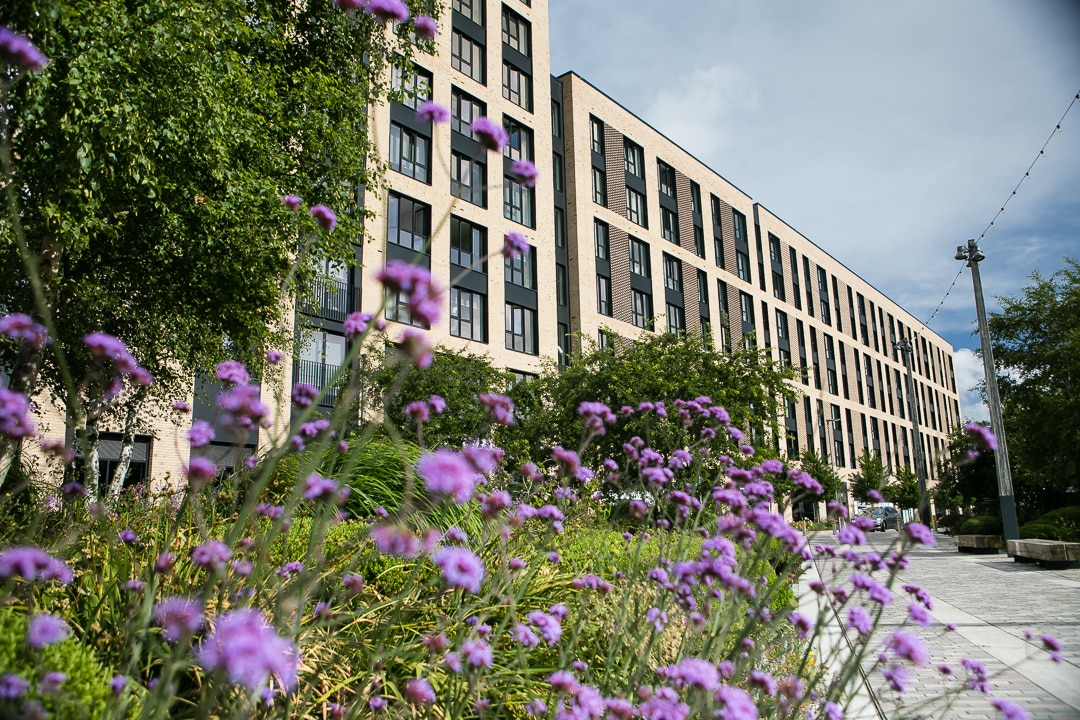What is a
heat network?
Low carbon heat networks distribute heat or cooling from centralised sources to a variety of different customers. They are one of the most cost effective ways of reducing carbon emissions from heating.

The future of heating
Heat networks – also called district heating – are the future of heating our towns and cities. They are critical heat distribution infrastructures, made up of insulated underground pipes that supply heat from a shared central energy source to domestic and non-domestic buildings.

The benefits of heat networks
Kind to the environment
![]()
Heat networks can reduce carbon emissions. A heat network is one of the most cost-effective and efficient ways of providing heat to consumers and when coupled to a source of low-carbon energy, the benefits to the environment are even greater.
The generation and distribution of heat results in removal/ avoidance of gas boilers, therefore improving air quality
Great for consumers
![]()
Being efficient, heat networks can help tackle fuel poverty by reducing heat costs. As well as offering competitive pricing in comparison to traditional alternatives, heat networks avoid the need for boilers being in your home, and the associated costs of maintaining and replacing them.
Heat networks are reliable
![]()
Unlike traditional gas boiler systems, heat is generated at centralised energy centres before being distributed to consumers. This is managed by trained professionals who are there to ensure that a reliable and efficient service is delivered through the network.
Long-term flexibility
![]()
Inherently flexible, heat networks can take advantage of a wide array of different heat sources – including the recovery of low-carbon heat from resources that would otherwise be wasted – such as industry, energy-from-waste plants, or naturally-occurring sources such as geothermal or rivers.
As they are not tied to any specific source of heat, they can easily adapt to future changes in the energy market without locking in its consumers to one specific form of generation. They also can enable the use of local energy sources, which further improves energy resilience.
Providing job opportunities
Heat Network projects are an excellent job opportunity and chance to improve skills of those in the industry.
A proven solution
Proven by widespread use throughout Scandinavian countries for many decades, heat networks have been relatively uncommon in the UK until recent years. They now form an important part of the UK Government’s plan to reduce carbon as well as cutting heating bills for customers and will become more common and widespread over the coming years.

“Although heat networks currently meet approximately 2% of the overall UK demand for heating, the independent Committee on Climate Change (CCC) has estimated that, with continued support, they could provide 18% by 2050.”
Case studies
Find out more about the heat networks that are already delivering low carbon heat to customers across the UK.

Energetik will be able to supply 60,000 homes in Enfield with low carbon heat
Energetik is building and operating high quality heat…

Queens Quay Heat Pump Heat Network Scheme
This project delivered at Queens Quay was the…

Greenford Quay, West London, Switch2 Energy
Greenford Quay is a 2000 property build to…

